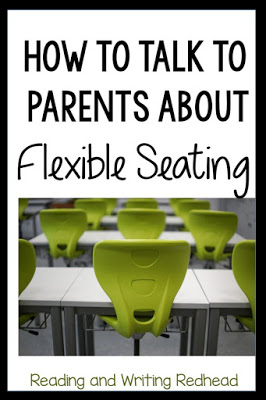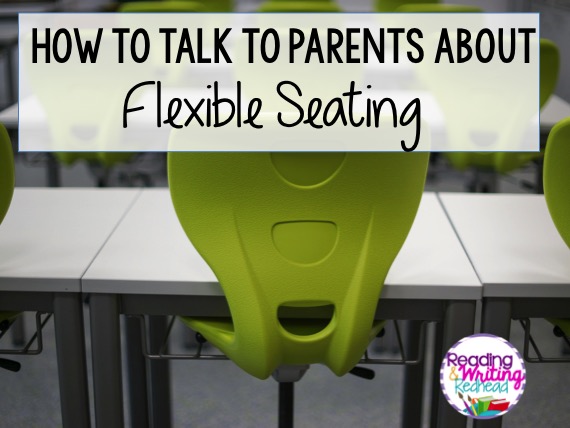
Clearly, if you have been to my blog before, you know I love flexible seating! Sometimes, when you have a new class, questions from parents start arriving via email before the first day of school or on meet the teacher day (if you have one before school starts) ! If you are concerned about answering them, take a look through this post and see if the info would support you!
Let’s take a look at some common questions and how you might respond…
1. What is flexible seating?
If folks ask this, I explain by saying that flexible seating is giving students alternatives to traditional classroom desks and chairs. Students are allowed to choose where they seat ( to varying extents based on the teacher and students). I always share the Starbucks analogy. When you go to Starbucks, there is more than one type of seat. There might be hard chairs and tables, but also sometimes bar stools, tall tables, leather chairs and low tables. You choose the best seat for yourself – where you feel comfortable, and if you came to work, you choose what is ideal for getting work done. This usually does the trick to help folks understand!
2. Does it mean students just sit on the floor all the time?
In my humble opinion, having no chairs and seats at all and having students all sit on the floor is not flexible seating. That does not give students the option to choose what works best for them. Therefore, my answer is no. Sometimes students sit on the floor at a low table, or sit on the rug with a clipboard or lap desk. Just as many students are in chairs, at tables, desks, or standing and working at tall tables.
3. What if my child doesn’t do well with it?
Usually I reassure parents that students can always use a desk and chair if they need. In almost every case though, after their child has been in the classroom for a few weeks, coming home with excitement about options, parents feel better!
4. What if my child has special needs?
One reason that flexible seating is so beneficial is that there always always options to meet the needs of students. For example, students that have poor core strength can sit on a traditional chair or in a beach chair, camp chair, etc. Actually, a few minutes a day of sitting on a stability ball or wobble stool will help students develop their core strength. Also some of the seating options can be found on IEP and 504 plan recommendations, such as air filled seat cushions and stadium type seats that can be used on the floor or rug but provide back support!
5. My child needs a desk.
I always keep a few desks in the classroom (3-4) for students who might need one. I would always let a student sit at one if they want; however, I might engage the parent in a conversation about why they feel that way, share what I see in the classroom, and encourage the parent to talk to their child and ask the child what they like and do not like about the seat options in the classroom. I would also talk to the student myself. Honestly, even many parents who feel their child needs a desk at the beginning of the year tend to become more open to the idea of things like wobble chairs, ball chairs etc. as time goes on and their child shares their enthusiasm. Again, however, don’t deny a child the option of a desk if that is what they are comfortable with.
6. Can I help you obtain what you need for flexible seating?
There are so many options! If you have a class wish list, make sure you put your flexible seating items on there. You can also have an Amazon School List for items like these. Many teachers get funding thanks to Donor’s Choose (what I used) and Go Fund Me. Coming soon at Teachers Pay Teachers will be, TPT ClassFund (A Donor’s Choose type approach for things like flexible seating guidelines posters and classroom management tools)
Finally, if you want my free Flexible Seating Ebook, click here to grab it!
What is a question I haven’s answered here? Comment and let me know!






